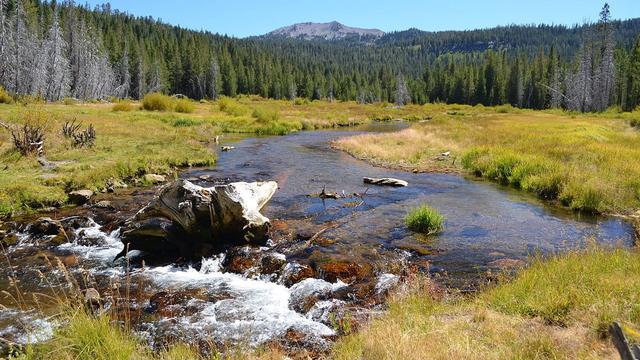
How To "Read The Water" For Trout
Fishing a stream for trout can be some of the most rewarding fishing you’ll ever get from the bank – but it comes with a bit of a learning curve for anglers that are used to the more consistent waters of lakes and reservoirs.The best way to up your odds? Learn to “read the water.”:
1. Eddies
Source: DiscoverCatfishingAn eddy is the area of calm water that occurs behind any object that is obstructing the current. Eddies are natural places for trout to hold because they offer the ability to effortlessly watch the current for prey drifting by. Although smaller objects create only back eddies, large enough objects also create front eddies – so don’t be afraid to target them as well. To fish an eddy, approach it from downstream and cast past the obstruction, even below a float – then work or drift your bait past the object, making sure to get it as close as possible.
2. Pools
Source: MurraysFlyShopYou’ll often hear fisheries biologists refer to streams by “riffle, run, and pool” nomenclature. Pools are places where the current slows down, and the water deepens. Deeper water attracts fish of all species because it provides them more protection from predators, and a place to get out of the current. Fish pools from downstream, and make sure to saturate all portions of the pool, as trout will often favor a specific portion of each pool. A good rule of thumb is to make at least 10 casts with any of your favorite trout baits in any pool deep enough that you can’t see the bottom.
3. Cut Banks
Source: Kidfish.BCThe term “run” refers to longer, usually straight stretches of a stream that feature a consistent depth. In freestone creeks runs are particularly common. Because runs usually lack depth changes and obvious targets, they are often overlooked by trout anglers. This is a mistake. Runs commonly feature “cut banks” or areas where the grassy bank has been undercut by the creek, creating a perfect hiding spot for a trout. Cut banks offer reduced current and can be dynamite later in the summer when bank grasses offer peak shade. To fish a cut bank – run your bait with the current as close as possible to the edge of the grass. Cut bank trout are particularly susceptible to inline spinners, as they are used to darting out at baitfish that flit by in the current.
Updated April 12th, 2019 at 9:06 AM CT
